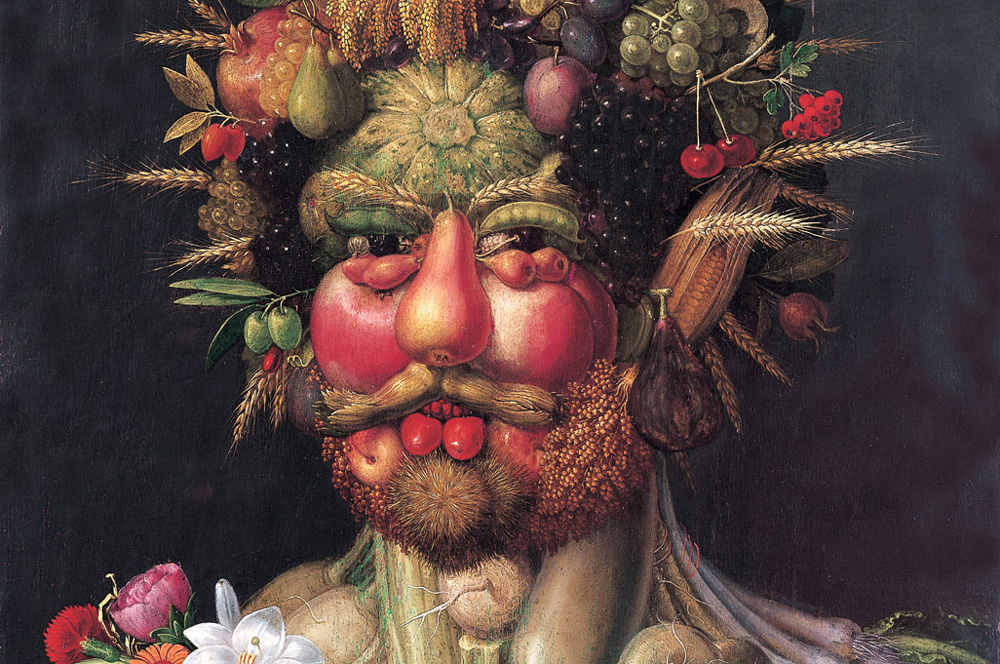Beyond appearances: the mysterious art of Arcimboldo

Lege et rilege, from the Latin: read and reread.
These are the key words to understanding Arcimboldo, an artist as beloved throughout the world as he is enigmatic.
His story is that of a young man from Milan who began his artistic career in the workshop of his father, a painter who had also worked on the Duomo.
We don’t know much about his early work, but one thing is certain: his life changed radically in 1562, when he moved to Vienna to the court of the Habsburg emperors. Arcimboldo was much loved at the court, and it was during this period that he created his first very famous works: portraits of human faces made from fruit, vegetables, and fish.
These works appeal to both adults and children and are much appreciated for their playful nature, but be careful: Arcimboldo’s artistic intentions were not to create simple visual games.
On the contrary, Arcimboldo was very interested in the allegorical and symbolic nature of reality with his art he tried to go beyond the appearances of the world.
It is no coincidence that his compositions, while using elements from nature (fruits, vegetables, animals), try to go beyond nature, creating surreal compositions with a meaning much broader than the individual compositional elements.
Hence the famous words lege et rilege, or read and reread: a key principle of alchemy, which Arcimboldo had come to know very well at the court of Rudolf II, a sovereign very interested in the occult sciences.
Lege et rilege invites us to do just that: to read and reread in order to gain a deeper understanding and discover new meanings beyond appearances.
If you ever have the chance to admire an Arcimboldo work in person, our advice is this: imagine going beyond what your eyes are observing, and let yourself be carried away by the profound meanings of his works.
Discover the King Solomon’s Ring Album
DISCOVER THE ALBUM